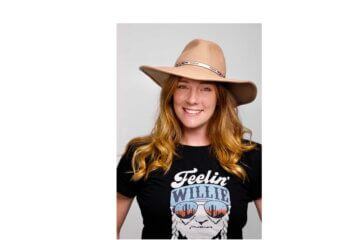In certain offices, looking too boring can be a detriment. For example, in one creative office where I worked, an applicant interviewed in a traditional pantsuit. Despite her skill set the general sentiment was that she just didn’t “get it.” She almost got passed over.
Why? Because her look wouldn’t resonate with the clients. In other words, her style choices could hurt the company’s bottom line. That was a fashion industry office, but it’s not just those in “The Devil Wears Prada” who are penalized for not dressing appropriately hip — advertising and branding, design, media and tech startups are just a few industries where nontraditional professional attire is the new norm.
You may initially rejoice at the thought of tossing aside your rigid, confining work clothes, but uniforms and suits can actually make dressing easier. (Creativity is hard work!) The call to action is more than mere “business casual” — which is already challenging — and can be equally difficult to nail.
Here are four key elements you need to create a nontraditional look.
How to Dress for Work
Rethink Casual
Think of nontraditional office clothes as workwear, only with more of a nod to your personality and personal preferences. But remember that “casual” clothes are not all created equal — the jeans and T-shirts you wear to do housework are likely not the same you’ll wear to work.
Nontraditional office wear doesn’t mean low quality or cheap, so if jeans are part of your base formula, invest in high-quality denim. Try a pair of dark, fitted jeans; white denim is a great staple for warmer months. Dresses are another terrific base that easily dress up or down and transition effortlessly for nights and weekends.
Some of the best chic pieces are generally simple, yet have small details that subtly communicate your nonconformist streak and ability to think outside the box, like contrast seams or printed lining.
If you have some professional pieces that feel too uptight, work on transforming them before you buy new. Relax corporate basics by popping your collar, rolling your sleeves and pants, and layering blouses, sweaters, jackets, and scarves — sometimes in contrasting colors and prints.
Remember, most leggings still aren’t pants, even in creative spaces. But if you buy high-quality knits and style them just right, they can work. Be sure your top is loose and flowy and comes down beyond your backside (consider a belt at the waist to reclaim shape), and opt for a loafer or riding boot (rather than sneakers or ballet flats) to give the look a little more polish.
Accessorize!
Accessories can be the single distinguishing factor between weekend casual pieces and an office-appropriate outfit. And since your goal is to visually communicate how clever and creative you are, unusual pieces offer the right pop.
Jewelry can be an economical way to do this. Look to thrift and vintage outposts, small local designers, or sites like Etsy to locate some signature accents that feel special. Focus on statement pieces — think asymmetrical, brighter colors, bold shapes, or even lots of layered metallic chains — as opposed to the small, understated items you might see in more corporate environments. (But remember: If your base ensemble is already attention grabbing, tone down the accessories. It’s all about balance.)
In addition to jewelry, the right pair of shoes can be a quick way to infuse a basic outfit with a creative twist. Mixing formal/higher-end pieces with casual items often has the most powerful effect. So if you’re wearing jeans and a T-shirt, consider adding heels. If you’re wearing leather pants, some (hip) sneakers or low ankle boots will keep your look edgy yet casual.
You have more of a creative license when it comes to footwear in nontraditional offices, but whatever you do, leave the flip-flops at home. Period.
Don’t Forget: Creative Still Means Polished
Sloppiness is not effective in any professional setting, regardless of how creative it is. Polished and professional should still be your style mantra, though you can be less buttoned up.
It’s not the care or attention that shifts in your personal grooming, but the variety of styles available to you. Maybe you’d play with a brighter lip or nail polish in a spring color, for example. Regardless of the office, the makeup should be neat and not overpowering or distracting, and nails should be tidy and chip free.
And while you may not reach for heavily structured pieces like suits, you still want your clothes to fit and flatter. Even casual clothing may need a tailor, so give the pieces the same scrutiny as more formal items. Scuffs, rips, and stains are still off-limits, so be vigilant in monitoring the wear and tear on your clothing, and keep in mind that even casual shoes need a regular buff and shine.
Consider creating a monthly schedule for dropping off dry cleaning and tailoring and stopping by the cobbler; making it a recurring appointment on your calendar means it’s more likely to become a habit.
Know Your Audience
Remember that — perhaps above all else — we like people who are like us.
An experiment found that students followed a researcher’s instructions more carefully when she was dressed casually, like them, rather than in more formal attire. Knowing your audience is key, even in casual offices. You still want to dress to impress, and you will always be more effective if you feel “like yourself,” but tweaking your look to give a visual nod to your target audience will definitely work in your favor.
The best rule of thumb is to determine the basic style formula of your audience (whether casual dresses or jeans and tees) and step it up a little: a chunky necklace with your basic white T-shirt or some pointy-toe leopard flats with khaki pants. You’ll look like them, but slightly better. And everyone likes something to aspire to.








